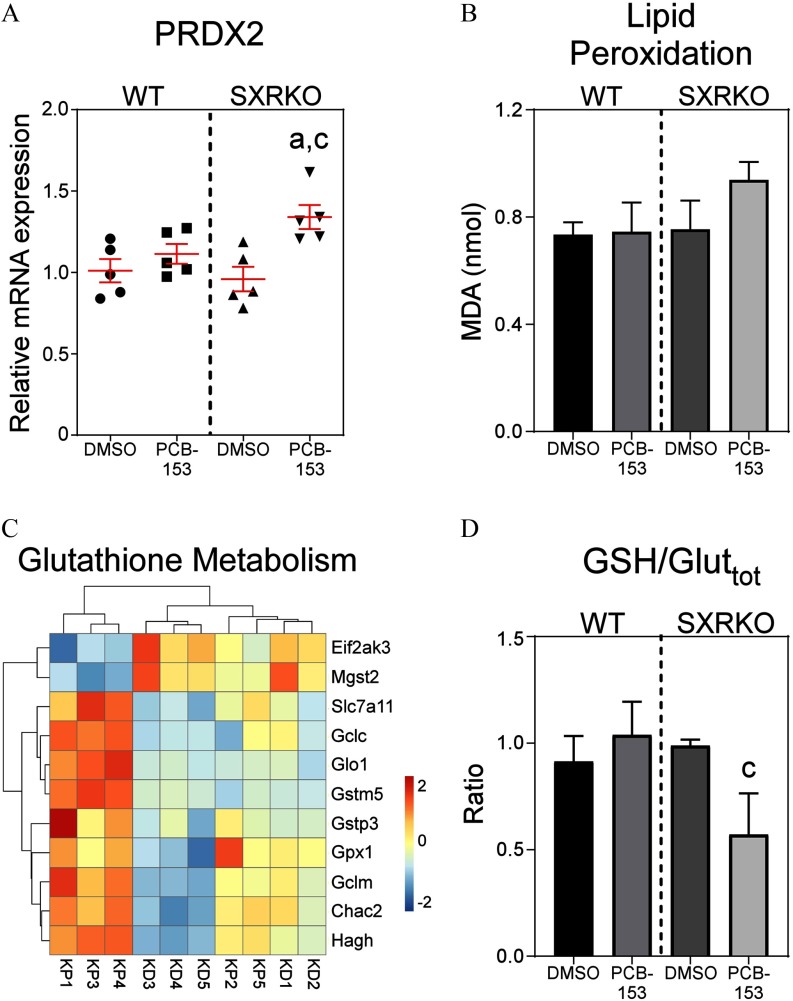Figure 4.
Oxidative stress markers in spleens and red blood cells (RBCs) of 4-wk-old wild-type (WT) and steroid and xenobiotic receptor knockout (SXRKO) mice perinatally exposed to polychlorinated biphenyl 153 (PCB-153) or vehicle. (A) Peroxiredoxin 2 (Prdx2) mRNA expression in the spleens of WT and SXRKO mice exposed to PCB-153 or DMSO, plotted as mean fold change over WT (). (B) Malonaldehyde (MDA) levels of RBC membranes from PCB-153- or DMSO-exposed WT and SXRKO mice (); data plotted as . (C) Heatmap of differentially expressed genes (DEGs) in the spleens between SXRKO mice exposed to PCB-153 () compared to DMSO () for genes related glutathione metabolism. (D) Ratio of reduced glutathione (GSH) to total glutathione in RBCs of WT and SXRKO mice exposed to DMSO or PCB-153; plotted as (). a, statistically significant compared to WT DMSO; c, statistically significant compared to SXRKO DMSO determined by two-way analysis of variance (ANOVA) and Tukey’s multiple-comparisons test. Note: D, DMSO exposure; K, SXRKO mice; P, PCB-153 exposure; W, WT mice.

